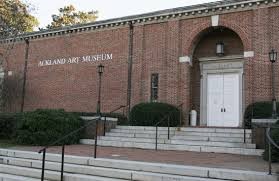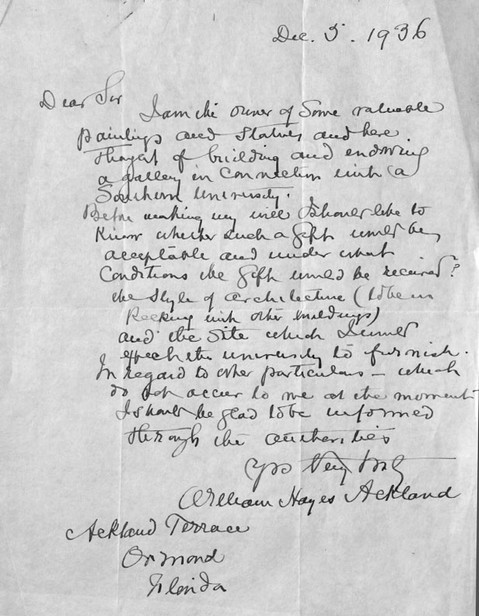Ackland Art Museum
Introduction
Text-to-speech Audio
Images
The Ackland Museum of Art opened in Chapel Hill in 1958,

The museum is named after Hayes Ackland (1855-1940), who decided to bequest funds to Duke University to build an art museum. However, in 1941, Duke refused the money owing to Ackland's request to be buried within the museum.

Backstory and Context
Text-to-speech Audio
During the 1930s, interest in the arts in North Carolina began growing exponentially. Due to the New Deal Federal Arts Project, nine arts centers opened in the state around this time. North Carolina passed a law that required all elementary school teachers to take art classes and the Department of Education began bringing visiting artists to UNC every summer. When Francis Speight, considered by many to be North Carolina's most famous artist, returned to teach classes in the summers of 1934 and 1935 he was met with an outpouring of enthusiasm. This response caught the attention of university administration They decided to make arts programs a more significant part of the university.
In 1936, Russell T. Smith began teaching at UNC. He was the university's first full-time art teacher. Smith left in 1940 to work as the head of the School of the Museum of Fine Arts in Boston. Before Smith left, he ensured that John Volney Allcott, who had previously been at Hunter College, would come to lead the department. Allcott held this position for 17 years. He formed an art appreciation group known as the Friends of the Person Hall that were influential enough to bring an impressive number of prestigious works to Chapel Hill. For example, "Victory Boogie Woogie" by Mondrian was exhibited at Person Hall in 1951.
Research now reveals that there were two reasons why Duke's Board of Trustees refused the bequest. The first was Ackland's insistence that the building be operated by his trustees rather than directly by the university. The second was the request for his remains to be placed in the museum. Ackland's bequest was quite specific how this should be handled:
“My trustees shall cause to be erected a memorial building in the form of a gallery or museum, to be known as the ‘William Hayes Ackland Memorial' and in which my trustees shall place and maintain on permanent exhibition all of my tangible personal property and effects reserved for that purpose in accordance with provisions hereinbefore contained, and such other objects of art as may be added thereto as hereinafter provided. As a part of or adjacent to such memorial building, I direct my trustees to have an apse erected, in which my remains shall be permanently interred in a marble sarcophagus beneath a recumbent statue…. I direct that said building or buildings be erected upon the campus of Duke University in Durham, North Carolina, or, if permission therefor cannot be obtained, then upon the campus of the University of North Carolina, Chapel Hill, North Carolina.”
